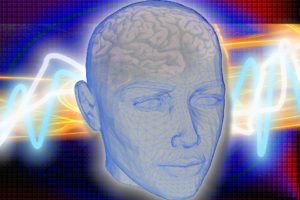Suffering a blow to the head can be tough, but everything gets worse when that blow comes with unimaginable force, stronger than our head can withstand. Cranioencephalic trauma can occur in people of all ages, as it happens when an external force causes this brain dysfunction. However, it becomes even more dangerous when it happens in children, for several reasons. And even though it is not the most pleasant topic in the world, we need to understand how it develops, exactly what cranioencephalic trauma is, and what its consequences are. If you want to know more details about this dysfunction, today’s article will talk exactly about that.
What is Cranioencephalic Trauma?
It is a brain dysfunction caused by some external force to a person’s head, usually a blow or a fall. Although many head injuries are called cranioencephalic trauma, this type of injury happens when the skull and the brain are hit at the same time, which can occur at various levels. It is a condition that has treatment and a cure, depending on severity, but it can also leave sequelae in the person. It is not possible to say for certain whether someone will be completely cured or left with sequelae before a doctor makes the correct diagnosis. Cranioencephalic trauma is a serious problem and needs to be treated as such so that the chances of a cure are higher.
Symptoms of Cranioencephalic Trauma
Even though they may vary according to the severity of the blow, there are several symptoms common among people with cranioencephalic trauma. These are:
- Nosebleed or bleeding from the ears
- Dizziness and fainting
- Seizures
- Black eye
- Purple marks on the ear
- Altered speech
- Memory loss
- Severe headaches
Not all symptoms may appear in every case of this condition, but these are the most common ones among all. The degree of pain and bleeding, as well as the degree of memory loss and fainting, may also vary according to the severity of the blow to the head.
Types of Trauma
There are basically two types of cranioencephalic trauma:
- Mild Trauma
- Severe Trauma
We will talk about the difference between the two and the specifics of each one of them.
Mild Trauma
Mild trauma cases are those where injuries are not diagnosed by tests. Even though it is mild, it should be treated seriously as it can lead to serious consequences like psychological and behavioral disorders.
Severe Trauma
Severe trauma is easily recognized, as the injuries tend to be stronger and deeper. This type of trauma is associated with bone depression or even fractures. Severe amnesia can be one of its consequences, but depending on the case, this type of trauma may even lead to death.
Cranioencephalic Trauma in Children
Cranioencephalic trauma in children requires extra attention. First, because a baby’s head is much more sensitive, as the soft spot only closes completely after the age of 2. In addition, a child’s bones are constantly growing and tend to be more fragile than an adult’s. Another factor to consider is that children are more likely to suffer this type of injury as they are always playing and jumping, which is very healthy, but we need to be mindful so that nothing more dangerous happens. Some of the main causes of cranioencephalic trauma in children are:
- Falls
- Blows against the wall
- Bicycle accidents
- Falls on stairs
Although it’s a desperate moment, a mother should remain calm and call emergency services as soon as possible when her child suffers this kind of trauma. It is also recommended not to change the position of the child’s body, as this may aggravate some injured part. 
Secondary Damage
The secondary damage of cranioencephalic trauma can usually be avoided if the treatment is done correctly, but there are cases where they appear nonetheless. Some of the main ones are:
- Cerebral edema
- Intracranial hemorrhage
- Hydrocephalus
- Intracranial infection
Even though these are serious problems, it is important to reiterate that these secondary damages are treatable and it is possible to prevent them from happening.
Consequences of Cranioencephalic Trauma
As we mentioned before, cranioencephalic trauma can have several consequences both in the short term and for life. The main ones are:
- Amnesia
- Loss or alteration of speech
- Paralysis of certain muscles
- Epilepsy
- Balance problems
- Loss of movement in limbs such as legs
- Motor problems
Many of these conditions can be treated and even reversed, depending on the severity of the injury and how soon treatment began. That is why it is always important to check if there are any sequelae from the injury so that the treatments can be carried out in the best possible way.
Treatment of Cranioencephalic Trauma
The treatment for this type of trauma will depend on the severity of each case, which is why it usually begins with tests to determine the next step. In milder cases, anticoagulant and anti-inflammatory medications are administered intravenously for immediate effect. In more severe cases, the dose of these medications may be higher and surgical intervention may be necessary to prevent the patient’s clinical condition from worsening. There are many things in life that we cannot control, and unfortunately cranioencephalic trauma is one of them. No matter how much we do all the necessary prevention, we are still subject to some type of accident that can lead to this dysfunction. And although it is a serious condition, it is often reversible and demands strict, but very effective, treatment. Whether it happens to children or adults, cranioencephalic trauma must always be taken seriously and treated in the best possible way. This is the best way to heal and return to a normal life after the shock of a blow to our head. Also See: Infantile Cerebral Palsy Photo: kalhh











